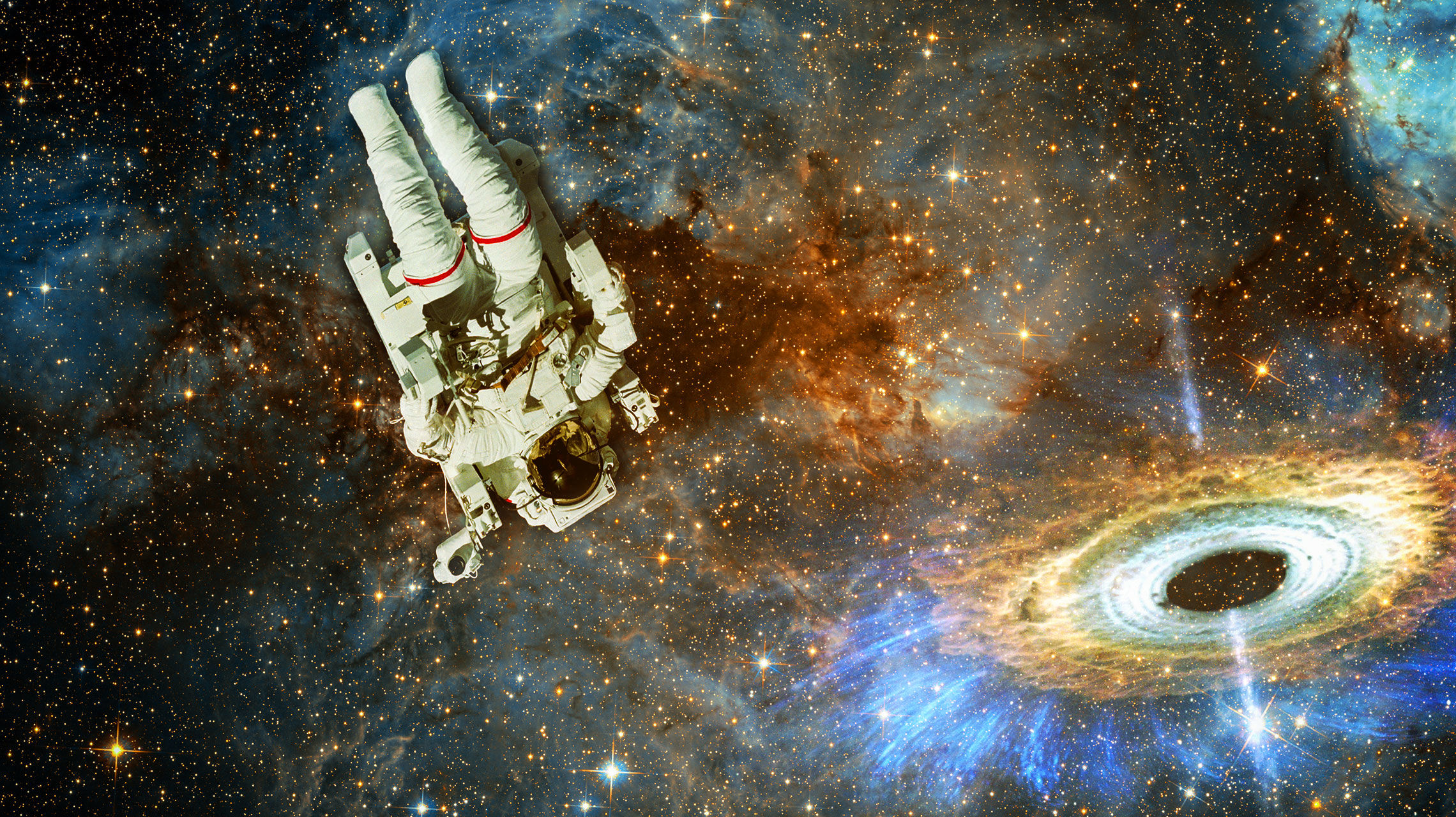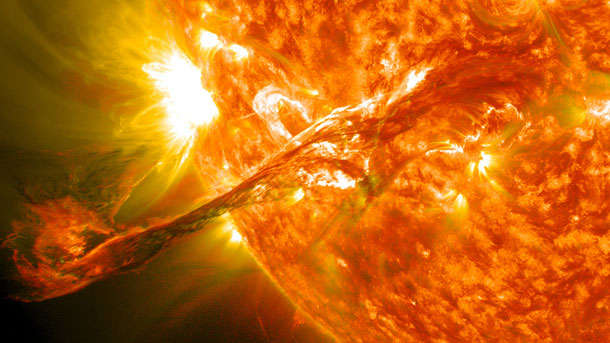Create a free profile to get unlimited access to exclusive videos, sweepstakes, and more!
A HUGE solar filament erupts into space

On August 31, the Sun threw a major tantrum. It started with a vast arc of material towering over its surface, a stream of plasma flowing between two sunspots. Sometimes these collapse back down to the Sun's surface, but this one exploded, blasting hundreds of millions of tons of material out into space.
SDO captured this ridiculously awesome picture of the arc just before it erupted:
Holy solar hissy fit! [Click to enfilamentenate.]
This picture is a combination of two images, both in the extreme ultraviolet part of the spectrum (30.4 and 17.1 nanometers, to be specific), where magnetic activity is easy to spot. The bright spot to the upper left is a sunspot, which are normally dark in optical light, but shine brightly in the UV. The filament, as the arch is called, is so big it's hard to comprehend: it was something like 300,000 kilometers (nearly 200,000 miles) across! That's nearly enough to extend from the Earth to the Moon.
Having a hard time picturing that? Yeah, me too. Happily, NASA provided an image with the Earth for comparison. Yegads. And there are more images of the event on the NASA/Goddard Flickr page.
 Stephen Ramsden is an astronomer who runs the Charlie Bates Solar Astronomy Project, and he saw it while at Dragon*Con! I was at D*C but totally missed this, but he got a very cool picture too. As you can see in this picture, it was erupting when he caught it. I'm kicking myself to have missed the solar observing at the con, and next year I'll be sure to take a look. I'd hate to miss something like this again!
Stephen Ramsden is an astronomer who runs the Charlie Bates Solar Astronomy Project, and he saw it while at Dragon*Con! I was at D*C but totally missed this, but he got a very cool picture too. As you can see in this picture, it was erupting when he caught it. I'm kicking myself to have missed the solar observing at the con, and next year I'll be sure to take a look. I'd hate to miss something like this again!
For his non-profit Charlie Bates Solar Astronomy Project, Stephen takes solar telescopes across his region and uses them to teach people (including kids!) about the Sun and its effect on us. I'll note he accepts donations to help him do this. Hint hint.
Finally, I'll add that this amazing solar eruption traveled outward at about 1500 kilometers per second (900 miles/second) and nicked the Earth's magnetic field on September 3, sparking aurorae in extreme latitudes. This had little real impact on us, but I gently remind you the Sun is still not at its peak. It'll reach the max of its cycle next year sometime, and the biggest flares and other storms tend to happen a few months after the peak. It's hard to say if this will do any damage - loss of satellites and power blackouts are possible, though no direct harm to humans on Earth can happen - but we'll see. The most likely outcome is aurorae, so keep your browser tuned to the NOAA Space Weather Prediction Center and SpaceWeather. If we do get aurorae, those are great places to let you know.
Images credit: NASA/GSFC/SDO; Stephen Ramsden
Related Posts:
- Awesomely blemished inverted solar beauty
- Talk Nerdy To Me: Solar storms
- Rain on the Sun
- GORGEOUS solar eruption!



























